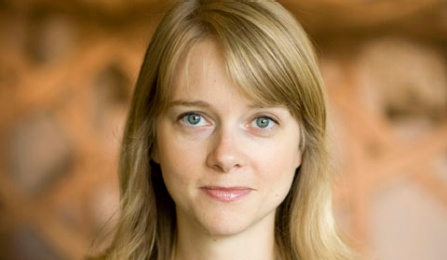Martha Bohm
We asked Martha Bohm, UB assistant professor of architecture, to tell us about their work in and thoughts on sustainability.

Martha Bohm, UB assistant professor of architecture.
Q: What are you doing to help UB become more sustainable?
A: My teaching focuses on giving architecture students the skills and tools they need to create sustainable designs for buildings. It is my hope that the students who graduate from our program and go on to become practicing professional architects will apply these skills and that UB-trained architects will become known as being knowledgeable about issues of sustainability and skilled in creating ecologically sensitive buildings.
Q: What kinds of sustainability related research/projects do you pursue at UB?
A: I focus my research on ways by which we can make the built environment — our buildings and cities — more ecological. Architecture is about so much more than developing the way a building looks. I am also very interested in how it acts, how it consumes energy and water, how it uses materials and creates waste. Buildings are complex systems which need to be studied like ecosystems; as a set of interactions between living and nonliving things. Through this study we can develop ways to make buildings have not only fewer negative impacts, but actually regenerate and restore natural environments.
Q: How are students involved in your sustainability work?
A: In addition to the architecture classes on environmental systems that I teach during the year, I also co-teach a summer study abroad in Costa Rica called Sustainable Futures.
In this interdisciplinary service-learning program for architects, landscape architects and planners, students work on real projects in the community of Monteverde, Costa Rica, which help the community sustainably accommodate the rapid development brought by eco-tourism.The Monteverde Cloud Forest Preserve, just down the road from the institute where we work, is one of the most biologically diverse locations on the planet with hundreds of unique species of animals, plants, insects and birds. This ecological gem is visited by nearly 250,000 people each year, and while visitors to the cloud forest may “take only pictures and leave only footprints”, they each stay in hotels and eat in restaurants which do have an impact on the natural environment.
Sustainable Futures works to make the community’s “built environment” — its buildings and infrastructure — more sustainable. For example, this summer the students began design on a facility which will not only treat wastewater and hence reduce the pollution pressure on the watershed, but will also be a garden and educational facility for tourists to come, stroll and learn about the role they play in the region’s water cycle. In an area which receives almost 10 feet of rain a year, water is a significant issue.
Q: What is the one thing you would like people to know that you do in your personal life to further sustainability?
A: Taking public transportation. Although my work centers on making buildings more sustainable through design, it’s important to note that another way the built environment contributes to an unsustainable environment is through the cars which bring us back and forth to our buildings. Public transit uses far less energy per person and doesn’t require us to pave so many surfaces in our cities.
If more people took transit, the University wouldn’t require so much land for parking cars on campus and wouldn’t create as much storm water and wouldn’t use as much salt in winter. I’ve also found that my walk to and from the metro station is one of the most relaxing parts of my day. Even in winter, I far prefer to walk than to drive white-knuckled through ice and snow.
Q: How could UB improve its sustainability efforts?
A: Encourage a car-free campus by providing free NFTA passes to the UB community, supporting a UB BikeShare and make a more walkable campus environment. I would love to see a UB that has so many people taking transit, biking or walking that it could turn over some of its paved areas into gardens and walking trails. It may sound outlandish, but wouldn’t it make for a much more delightful campus? It is entirely possible if as a campus we choose to make it happen.
Continue to build and renovate new buildings as sustainably as possible. UB currently has several projects underway — including the School of Architecture and Planning’s Hayes Hall — which are aiming to achieve gold certification under LEED, a system which assesses the overall sustainability of building projects.
I would love to see UB using each of these construction projects as a research exercise in creating sustainable buildings specifically suited to the UB campus. Each subsequent project could apply these lessons learned and allow successive buildings to become more sustainable with each construction project.
Use campus projects to explore and experiment with creative ways to make our physical places not just sustainable, but regenerative and restorative. The Solar Strand is a fantastic example of a project which creates useful outdoor teaching and social spaces and at the same time gives something back to the ecosystem by producing renewable energy as well as cleaning storm water.
If the campus were covered with projects like these, not only would UB reduce its impact, but it would be showing other universities that it is possible to create places which are not only sustainable, but also interesting, elegant and beautiful.